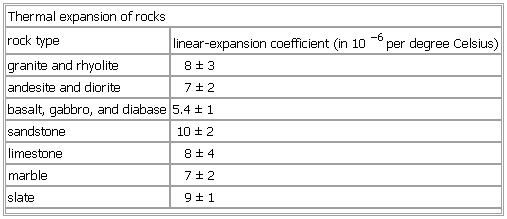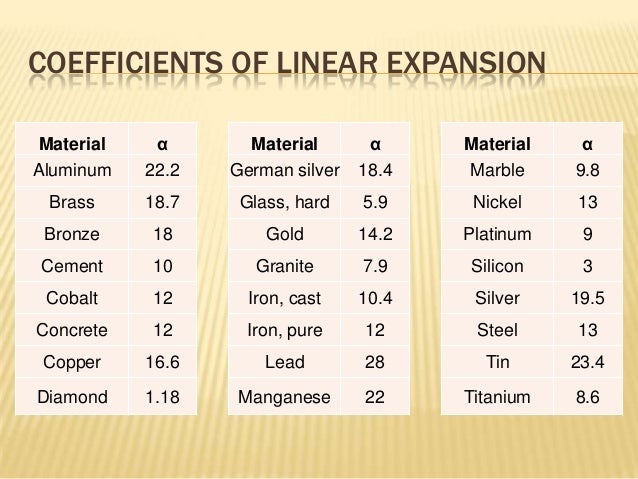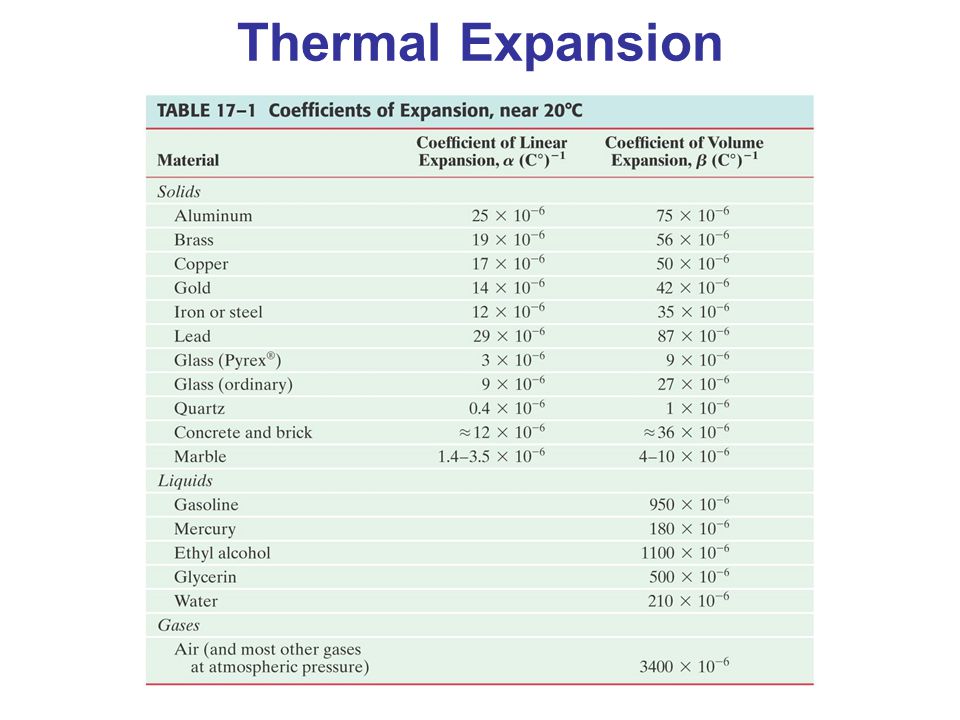The coefficient of linear thermal expansion clte of any material is the change of a material s dimension per unit change in temperature.
Thermal coefficient of expansion of marble.
This is given as the ratio of dimension change e g change in volume to the original dimension volume v per unit of temperature t change.
List of thermal expansion coefficients cte for natural and engineered materials.
Thermal expansion is large for gases and relatively small but not negligible for liquids and solids.
Most rocks have a volume expansion coefficient in the range of 15 33 10 6 per degree celsius under ordinary conditions.
10 6 m moc 1 μm moc m m meter per meter in in inches per inches most values for temperature 25 oc 77 of.
The coefficient of thermal expansion of neat cement paste ranges from around 11 10 6 c to 20 10 6 c.
American elements toolbox of conversion tables properties identifiers and size charts.
Granite 0 0000044.
The thermal expansion of marble is about the same as granite coefficient of expansion in inches of expansion per inch of material per degree f.
0 9 to 1 2 x 10 5.
K l length m q total heat transfer watt q heat flux w m2 r thermal resistance.
Thermal expansion coefficient of metals materials.
Linear thermal expansion is δl αlδt where δl is the change in length l δt is the change in temperature and α is the coefficient of linear expansion which varies slightly with temperature.
Thermal expansion coefficients for some common materials.
Cement concrete sand stone.
Natural rocks used for aggregates exhibit a considerable range of thermal expansion coefficients related generally to silica content tables 15 10 and 15 11 but rarely exceed about 12 10 6 c and can be as low.
Mse supplies is a leading supplier of high quality materials equipment and materials characterization services for advanced materials research and manufacturing.
Heat transfer coefficient from inside h heat transfer coefficient from outside k coefficient of thermal conductivity w m.
1 2 to 1 3 x 10 5.









